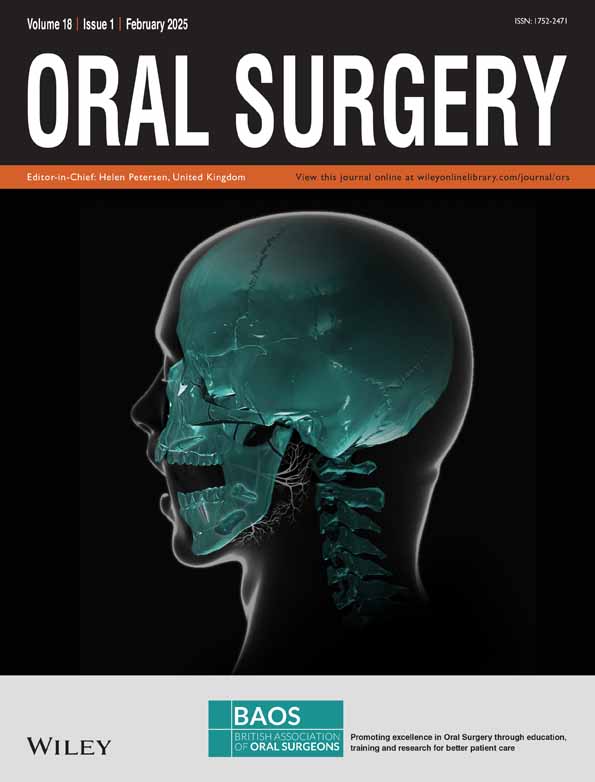Calcifying epithelial odontogenic tumour with an atypical clinical presentation in a paediatric patient: A case report and literature review
Abstract
Aim
We report a rare case of a calcifying epithelial odontogenic tumour with atypical clinical presentation in an adolescent and present a literature review of this tumour in paediatric patients.
Materials and Methods
A 12-year-old female patient presented with a painless swelling of the left mandible, with a history of 6 months. Clinical examination revealed a sessile mass with a reddish-pink colour and firm consistency. Tomographic images showed a hypodense, unilocular lesion involving unerupted tooth #34, with a hyperdense focus in contact with the tooth crown disrupting the buccal cortex.
Results
Enucleation, curettage and peripheral osteotomy of the lesion were performed, and the impacted tooth was removed, followed by the application of autologous leucocyte and platelet-rich fibrin matrices to the region. The patient evolved favourably with good clinical healing and evidence of new bone formation.
Conclusions
Despite its aggressive potential, the conservative approach for CEOT in paediatric patients proved to be effective. Our review found reports of recurrence up to 13 years after surgery. Therefore, long-term clinical and radiographical follow-up is indicated.
CONFLICT OF INTEREST STATEMENT
The authors declare that they have no known competing financial interests or personal relationships which could have appeared to influence the work reported in this article.
Open Research
DATA AVAILABILITY STATEMENT
The datasets generated during and/or analysed during this study are available from the corresponding author on reasonable request.




